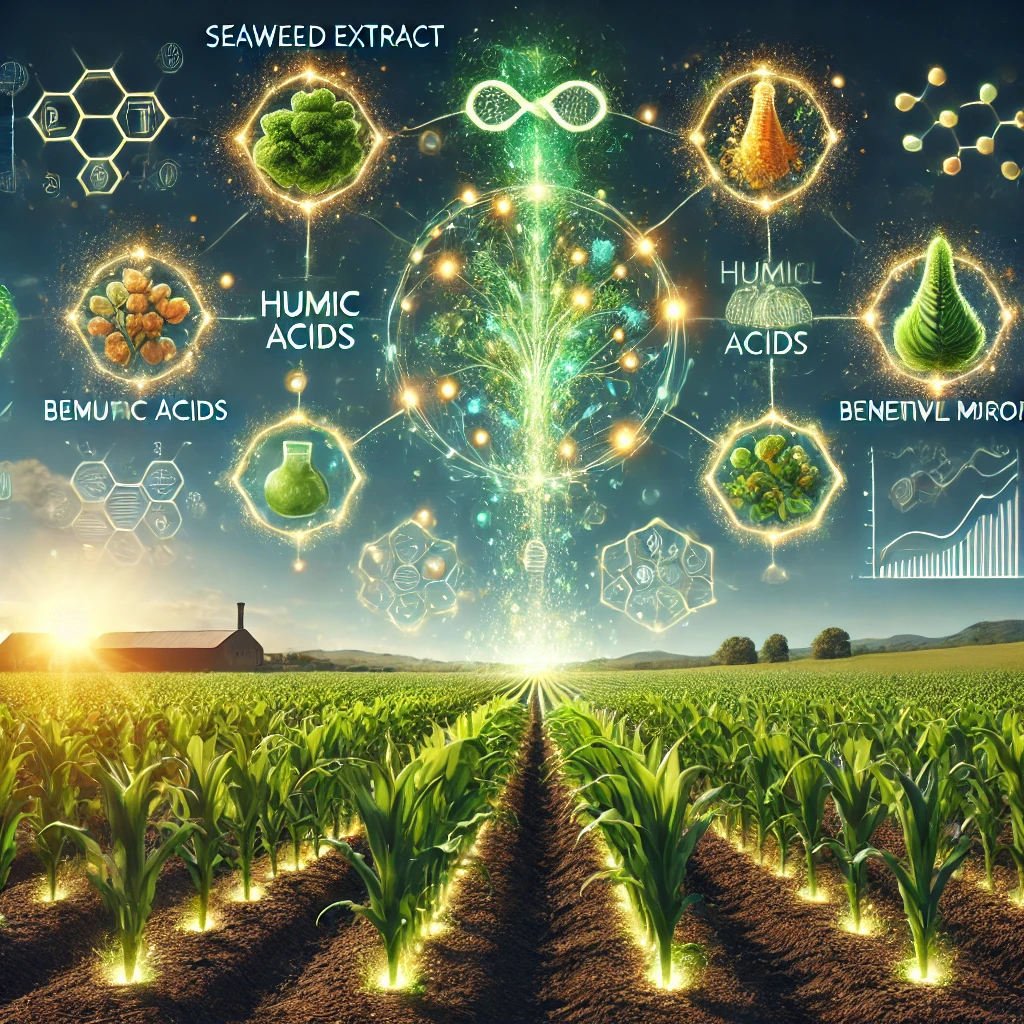
Biostimulants Market: Cultivating Growth in Sustainable Agriculture
As the world grapples with climate change, soil degradation, and the urgent need for sustainable farming practices, biostimulants have emerged as a promising solution. These biologically derived materials enhance plant growth and productivity—not by serving as traditional fertilizers or pesticides, but by stimulating natural processes. The biostimulants market is thriving, driven by demand for eco-friendly agricultural inputs, organic farming, and rising food security concerns.
What Are Biostimulants?
Biostimulants are substances or microorganisms applied to plants or soil to stimulate natural processes. Unlike fertilizers, which add nutrients, or pesticides, which protect plants from pests, biostimulants work by enhancing the plant’s own physiological abilities. They improve overall plant health and productivity by targeting processes such as:
- Root development
- Nutrient efficiency
- Stress tolerance (drought, salinity, extreme temperatures)
- Soil microbial activity
Common types of biostimulants include:
- Humic and fulvic acids
- Seaweed extracts
- Beneficial fungi and bacteria (e.g., mycorrhizae, rhizobacteria)
- Protein hydrolysates and amino acids
- Chitosan and other biopolymers

Biostimulants Market Overview:
The biostimulants market is expected to grow from USD 4.46 billion in 2025 to USD 7.84 billion by 2030, reflecting a compound annual growth rate (CAGR) of 11.9% over the forecast period. Biostimulants have become increasingly important in modern agriculture, supporting enhanced crop yield and quality to help meet the rising global food demand. As the world population is projected to near 10 billion by 2050, agricultural output must rise significantly, making sustainable solutions like biostimulants critical.
This market is gaining momentum as more farmers turn to eco-friendly methods to boost crop performance in the face of climate challenges. The shift toward organic and environmentally responsible food production further drives demand for natural agricultural inputs. In addition, advancements in bio-based technologies and supportive government policies are accelerating the adoption of biostimulants. Growing awareness of their benefits—such as improved nutrient uptake, enhanced stress tolerance, and better soil health—continues to solidify their role in the future of sustainable agriculture.
- Sustainability Goals: Governments and global bodies are promoting green agricultural practices. Biostimulants help meet regulatory targets and sustainable development goals by lowering the dependency on synthetic agrochemicals.
- Climate Resilience: As farmers face unpredictable weather, droughts, and soil degradation, biostimulants offer a vital tool to enhance plant tolerance to abiotic stresses like heat and water scarcity.
- Organic Farming Growth: With organic food sales surging worldwide, biostimulants fit perfectly into organic-certified systems, increasing their appeal among organic producers.
- Soil Health and Regenerative Agriculture: Biostimulants improve soil microbiology and structure, aligning with the principles of regenerative agriculture.
- Rise of microbial biostimulants: Probiotics for plants—such as Bacillus and Pseudomonas strains—are gaining popularity for improving root growth and nutrient absorption.
- Integration with precision agriculture: Companies are integrating biostimulants with drone-based and data-driven application systems for targeted efficiency.
- Customized blends: Manufacturers are developing crop-specific formulations, e.g., biostimulants tailored for tomato, citrus, or grapevine crops.
- Start-up innovation and consolidation: While start-ups drive innovation, big players like BASF, UPL, and Syngenta Group are expanding their biostimulant portfolios through acquisitions.
Leading Biostimulants Companies:
The report profiles key players such as UPL (India), FMC Corporation (US), Corteva (US), Syngenta Group (Switzerland), Sumitomo Chemical Co., Ltd. (Japan), Nufarm (Australia), Novonesis Group (Denmark), BASF SE (Germany), Bayer AG (Germany), PI Industries (India), T.Stanes and Company Limited (India), Gowan Company (US), J.M. Huber Corporation (US), Haifa Negev technologies LTD (Israel), and Koppert (Netherlands).
Recent Developments in the Biostimulants Industry
- In January 2025, Haifa Group launched its 18th international subsidiary in India, further expanding its global presence.
- In August 2024, PI Industries acquired Plant Health Care (PHC), a company specializing in peptide- and protein-based biocontrol and biostimulant products.
- In October 2024, Acadian Seaplants Limited and BASF formed a strategic partnership to develop innovative agricultural solutions to provide climate-resilient products that enhance crop yield and quality. Under this collaboration, BASF will integrate Acadian’s advanced biostimulant technology into its comprehensive chemistry and biological portfolio to expand its sustainable crop solutions.
- In October 2024, Elicit Plant and BASF France – Agro Division partnered for the 2024-2025 campaign to advance the development of the biostimulants EliSun-a and EliGrain-a, targeting the sunflower and cereal markets in France.
80% of the Forbes Global 2000 B2B companies rely on MarketsandMarkets to identify growth opportunities in emerging technologies and use cases that will have a positive revenue impact.
- Food Packaging Market Size Set for Strong Growth Through 2030 Amid Rising Demand for Convenience Foods
- Fertilizers Industry Set to Grow at 4.1% CAGR Through 2030
- Leading Automated Guided Vehicle Companies 2024: An In-depth Analysis
- CHARGED UP: SHIFT TO E-MOBILITY AND THE EVOLUTION OF TRANSPORTATION
- Global Automotive Market: Predictions For 2024
Emerging Trends and Growth Opportunities in the Biostimulants Market

For In-depth Analysis on Biostimulants Market


